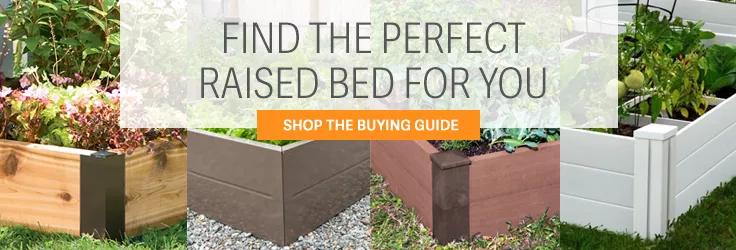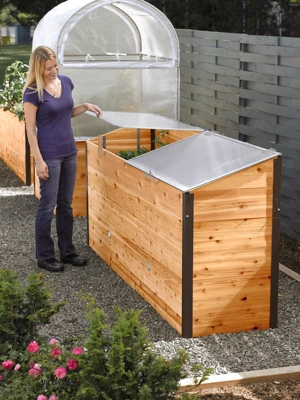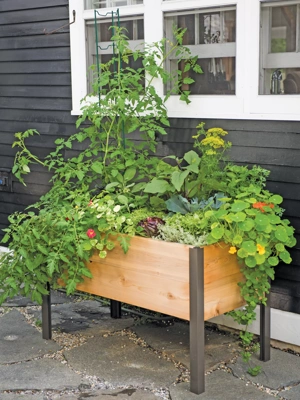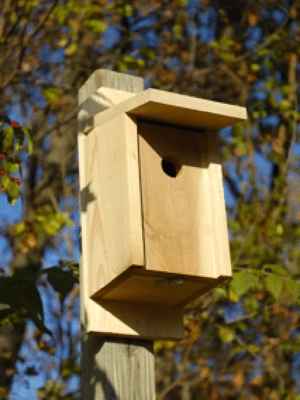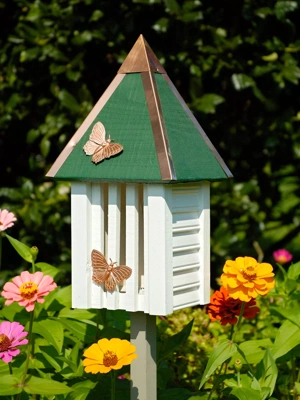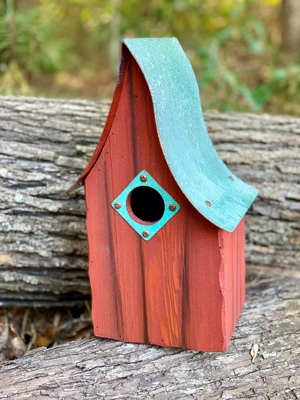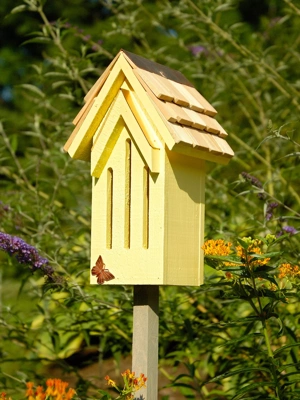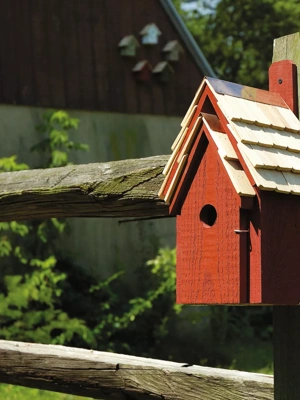Best Materials for Raised Beds
Learn how to choose the best raised bed material for your gardening needs
 Raised beds offer gardeners many benefits over in-ground gardening. They come in all shapes, sizes, and materials — including wood, wood composites, and metal.
Raised beds offer gardeners many benefits over in-ground gardening. They come in all shapes, sizes, and materials — including wood, wood composites, and metal.If you've never tried growing in raised beds, you might be surprised at how much better plants grow — and how much easier they are to maintain. For starters, raised beds allow you to plant earlier in spring and continue growing later in fall compared to flat, in-ground beds. You can make them with soil — or a soil-compost blend — that's fine-tuned to the plants you're growing. Raised beds reduce competition from weeds, and help create a defined edge that keeps pets and kids out of the garden space.
What are raised beds? In their simplest form, they're flat-topped mounds of soil. However, rain and other factors will cause the soil to wash down and flatten out over time, so you'll likely need to recreate — or at least renovate — the beds every year. That's one reason many gardeners choose to build raised beds with permanent sides. If you're thinking about building raised beds, one of your first considerations is what material to use. Factors to keep in mind include longevity, expense, and aesthetics.
Among the most popular materials for raised beds are wood, wood composites, and metal. Within these categories are a multitude of options. Let's look at a few.
 Cedar and cypress have a similar aesthetic and natural rot-resistance, making them an excellent choice for garden beds.
Cedar and cypress have a similar aesthetic and natural rot-resistance, making them an excellent choice for garden beds.Wood
Wood is the most popular material for raised beds; however, not all wood is equally suited to the task. When you're looking for the best value, you need to consider both upfront cost and how long the wood will last.
Unfinished (raw) pine lumber is the most economical choice for wood and is a good choice for gardeners trying first raised beds for the first time. Pine has limited natural rot resistance; however, you can increase its longevity in the garden by treating it with a nontoxic preservative (more on that below).
Cypress has natural resistance to rot, as well as resistance to insect and fungi invasion, making it a longer-lasting choice. Slower-growing than pine, cypress has a higher density and an attractive, fine wood grain that adds longevity and beauty to its list of benefits. Cedar is similar to cypress in both aesthetics and longevity. It’s a little lighter in weight, or density, than cypress, but otherwise, the two species are remarkably similar. Redwood has a distinctive beauty, but is rarely used due to its expense.
Wood treatments can add years to the life of your raised beds. Look for products that help the wood repel moisture. Some treatments, especially oils, will darken wood, accentuating its natural wood grain. Others, such as stains, can add a touch of color to enhance your landscape. Look for products labeled as safe for use around children, pets, and food.
 Composite beds are often made with recycled wood, which helps reduce the need for raw materials.
Composite beds are often made with recycled wood, which helps reduce the need for raw materials.Wood Composites
Wood Composites Made from a blend of wood particles and a synthetic material such as polyethylene, composites resist rot; therefore, raised beds made from composites tend to be longer lasting than those made from natural wood. Some composites have surface textures and patterns that mimic the beauty of natural wood — and they'll keep that beauty without the need for staining or oiling. Also, some composites are made from recycled wood, making them an especially earth-friendly choice.
 Galvanized steel is durable, rust-resistant, and economic.
Galvanized steel is durable, rust-resistant, and economic.Metal
Galvanized steel has made a comeback in both indoor and outdoor accessories, and raised beds are no exception. The galvanizing process creates a weatherproof, rust-resistant material that has been used for generations on farms and rural homesteads — a testament to its practicality and longevity. Corrugated galvanized steel, which is made by forming a flat steel sheet into a ridged panel, is particularly rigid and sturdy. It is relatively light in weight, too.
 More durable than paint, powder-coatings bond to the metal to create a scratch-resistant finish.
More durable than paint, powder-coatings bond to the metal to create a scratch-resistant finish.Powder-coating adds an additional layer of protection. In contrast to paint, which is applied as a liquid, powder-coating involves applying dry powder to the metal surface via a special gun that gives the powder a negative charge. This causes the powder to be attracted to the metal surface, resulting in an even layer with no drips. The metal is then heated, which bonds the powder particles together to create a smooth, durable finish that is more resistant to chips and scratches compared to painted surfaces.
 Aluminum is also an excellent raised bed choice, as it is naturally rust-proof.
Aluminum is also an excellent raised bed choice, as it is naturally rust-proof.Aluminum is, by nature, impervious to rust, and is therefore ideal for landscape uses. Our Lifetime Aluminum Corners, as well as the aluminum corners used on our complete raised beds, ensure tidy, attractive, and long-lasting corners. Their powder coating adds an additional layer of protection as well as a handsome aesthetic.
 Stone has an unlimited lifespan and creates a lovely, organic look.
Stone has an unlimited lifespan and creates a lovely, organic look.Stone, Concrete, and Brick
If you have an abundance of natural stone on your property — and a strong back! — you can create lovely raised beds in any shape you'd like. And, as evidenced by the stone walls traversing many old homesteads, stone beds boast extraordinary longevity. Alas, stones with flat surfaces are much easier to stack into raised bed shapes than the rounded stones found in many locales.
Concrete blocks, cinder blocks, and landscape pavers are all made with an aggregate material (such as crushed stone or coal ash) bound together with cement. Bricks are made from clay that is shaped and fired at high temperatures. Because these are shaped for use in construction, they have flat surfaces that make them easy to stack. However, like natural stone, they're heavy. And their degree of aesthetic appeal is in the eye of the beholder.
Upcycled Materials
We're all for upcycling and recycling; however, we recommend AGAINST using discarded tires and railroad ties for raised beds, because they can leach toxic substances. Old wooden pallets may be fine; however, they may contain traces of the materials that were stacked on them, making them a somewhat risky choice. In addition, some pallets have been treated with preservatives and/or insecticides; unfortunately, there's no way of telling if a pallet has been treated.
Pressure-Treated Wood: Nope!
Widely used in landscapes and construction, pressure-treated wood is made by placing lumber in a pressure tank along with a solution of preservatives that imbue rot-resistance, with the result that the chemicals soak deeply into the wood. Before 2003, the most common pressure-treated wood was made with CCA (chromated copper arsenate). However, concerns that the chemicals were leaching into and contaminating surrounding soil resulted in wood producers changing to a less-toxic chemical formula made predominantly from copper. Still, due to the risk of copper leaching, even this newer type of pressure-treated wood is not recommended for raised beds, and it is not allowed for use in certified organic growing.
Last updated: 09/14/2023
Print this Article:
Related items
Get the Dirt
Stay up to date on new articles and advice. Please fill out the information below.


